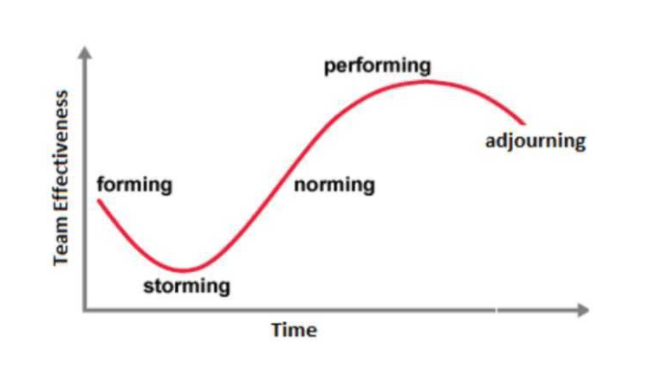Why is Team Development Important to a Leader?
Why is Team Development Important to a Leader?
A typical team is comprised of various personality traits, manners of work, preference, and priority. You expect your team to attain set goals, but they can only be realized with an effective leadership style as a leader.
Differences can make cooperativeness challenging; as a strategic leader, it is your responsibility to manage it.
Is team development significant the slightest bit? "Can't my team understand the objective, avoid conflicts, and handle projects effectively?” Although some teams do, not all teams are made equal. This is why it is paramount that the strategic leader understands the objectives themselves and can rally their team around them.
Following the Queen's University of Charlotte, 39% of employees worldwide argue that their organizations do not collaborate enough. True? Well, teams merely unite automatically, and it demands skilful leadership to build a high-performing team.
“Team development entails collective success.” - Kyle Kaloo

Leadership and Team Development: Any Relation?
Although the concept of leadership and teaming exist solely, intelligible leadership is critical. Poor leadership can’t guarantee success. Suppose the team attains its objective; the outcome is subpar.
Excellent team development is orchestrated by strategic leadership attributes that encourage member unity and engages them towards more meaningful goals. Being a professional leader - business owner, appointee, or manager, it’s up to you to set the tone and direction for the team and the organization. Moreover, you can't be creditworthy when the team and organization frown at your team management results.

As a leader, do you have a sense that some members of the team make the job difficult? If so, there might be some opportunities for you to engage them differently, being more strategic. Begin by strategizing to suit the nature of the objective and your team’s individual motivation and needs. Take a step back to regroup by exploring the objectives and identify some key steps/tactics to get the team there. Being able to continue collecting team member feedback is necessary!
The objective is not a one-person thing. Team members may be relying on your decisions, but their activity is significantly as important. Regardless of whom made the decision, the leader and team members both have a vested interest in the outcome.
EXCELLENT LEADERSHIP JOINS THE TABLE
Kristie Kuhl, JD. Managing Partner acknowledges the need to bring our whole selves to work. She argues that when we are better people, we are better colleagues.
Never wait until you are invited to the table. Being a strategic leader is about inviting yourself to the table, to not only have an open-door policy that team members can walk through but as well, being able to walk out to them where they are at. Ask questions, be curious, discover ideas, and create an environment where team members can contribute to the conversation without fear of retribution.
Ongoing communications fix problems, even problems yet to set in, and attract a bullet point in a marketing plan and team development.
Meanwhile, team development should be intentional and focused on establishing unbiased relationships with senior management. It is possible; set up calendar-friendly meetings and show up. Just because these meetings (one-to-one’s) are with your team members doesn’t mean when something else comes along you should reschedule them – if you do this often you are sending a message to your team members that meeting with them isn’t as important.

Share your thoughts, learn, educate, and encourage the team to feel comfortable with leadership – after all, they truly want to learn and understand more about you.
-Kyle Kaloo
IMPORTANCE OF TEAM DEVELOPMENT TO A LEADER
Establish Effective Communication
Team development helps an organization in many ways. Okay, so, why is team development essential to a strategic leader?
The quality of communication can be enhanced and effective through team development. It makes a leader understand when members feel comfortable through their opinions and shared thoughts.
It will get in the way of your leadership if you don’t have ongoing team communication. Most of the time meaningful information may be blotted out, which affects decision-making.
Moreover, when your team understands and enjoys the liberty to communicate this builds trust, increases buy-in, and allows them to make commitments.
Setting Collaborative Objectives
Before an objective commences, the entire team should have clarity about what “finished” looks like. Every member should be involved deeply, and the vision must be communicated and emphasized throughout the project. A strategic leader neither singles out members to blame nor relies on giving instructions only; instead, they see themselves as part of the same team and the solution.
Obscure objectives often always result in lacklustre achievements. Since team development advocates togetherness, we can expect the team to personalize purposes. You may not have the proper head-start to implement collaborative objectives, but it pays off with time.
Responsibility and Transparency
While Division A complains about the objectives, Division B is canvassing for leadership changes. Division brings instability, and the goal becomes dead from the onset.
Indeed, you will make a few bad calls, but proper team development can fix things. You are human despite expectations.
A project can go off course, typically when the scope changes. Although a setback, it is merely a component of leadership, which every strategic leader will experience. Thankfully, team development lets you take responsibility, assemble the team, discuss and make amends.
Simple is hard enough, then add to it the complexity of individual team members.
Enhanced Productivity
The identity of team development is productivity. Since the objective is rooted in togetherness and collectiveness, goals are attainable from the onset. You can’t always get things right, but building a decent team guarantees productivity. This allows the team to move from busy to productive
Consistency
Winning the first time increases trust in your leadership.
The company benefits and hopes for your leadership again, and they expect even more. The relationship established in the recent project can migrate to new projects for similar or better and proficient results. Being consistent with results will allow for your success to be habitual.
Tuckman's Stages of Team Development
A Wikipedia publication indicates Bruce Tuckman's 1965 “Stages of Team Development”, which we assess in this section. Initially, Tuckman published four-team development stages but added a fifth eventually.
Below are the essential stages of development:
Forming
Tuckman's first stage of team development indicates the various attitudes team members bring into the project.
- Their attitude may be harmful, exciting, or reticent. When a team member is mysterious, the objectives become alien to them. Also, members get to familiarize themselves with themselves during this stage. A leader ought to get the team to understand cooperative working.
- The goals should be clear-cut; otherwise, you abandon team members to find the barest cues from others. You know that an alienated workforce can't be optimally productive.
- In this regard, a strategic leader must be proactive with strategies/tactics, including nominating responsibilities to establish attainable goals.
Storming
Within Tuckman’s storming stage, team members become comfortable expressing themselves. Depending on their dedication towards the objective, they may double-up to satisfy their responsibility.
At this point, familiarity controls the minds of the workforce. The slightest mistake from one member and the entire team goes gaga. The storming stage makes or breaks an objective; while some teams defeat their differences, others succumb and fail, especially when the leadership is miserable.
Typically, this stage tests a leader's capabilities and abilities to contain challenges while the project continues.

Norming
During the norming stage of team development, team members get a better glimpse of the objective.
They begin to pace up, having known the goal and what it will take to get there.
Your team will realize the need for oneness and that they are responsible for the outcome too. Nevertheless, a leader must release the throttle. This stage is when you educate your team like never before and be encouraging rather than apportion blame at the slightest error.
Following the Harvard Business Review report, decades of research confirm that happiness is vital for almost every business outcome, including a 37% sale raise, a 31% productivity increase, and 19% accuracy.
It makes even more sense since team members' success depends on the team member's mood.
Performing
Team members are super productive during the performing stage. They each possess the know-how to scale problems and answer questions from other members. This stage also simplified additional tasks; team members would rely on existing skills to solve complex problems.
What if the organization introduces a new member to the team? Be satisfied! At least 90% of your team have personalized the objective enough to educate new hands.
While building your team, develop yourself and refine your portfolio with the achievement. A strategic leader is interested in the growth of team members too. Get willing members to discover their potentials, making commitments, and being held accountable, will increase team results.
Adjourning
Tuckman introduced the fifth stage of team development in 1977.
Utilizing the adjourning state would have achieved a more significant part of the objectives. The idea is to finalize, refine the project, and document the result.
A leader can facilitate opportunities as the team ends and introduce a proper acknowledgment of the project.
If the workplace features short-term projects, this stage becomes recurrent.
The Bottom Line
Excellent team development is orchestrated by strategic leadership attributes that encourage member unity and engage them towards more meaningful goals.
Team members truly want to do more meaningful work and they want to be given an opportunity to do just that. Being a strategic leader that looks beyond the operation and more focused on team development will create an environment of inclusivity, engagement, and will drive overall team results.
Leading a high-achieving team is possible and within reach for a strategic leader. What is one thing you could start doing with your team right now that will have a better impact on your team’s development?
Share your ideas in the comments section.